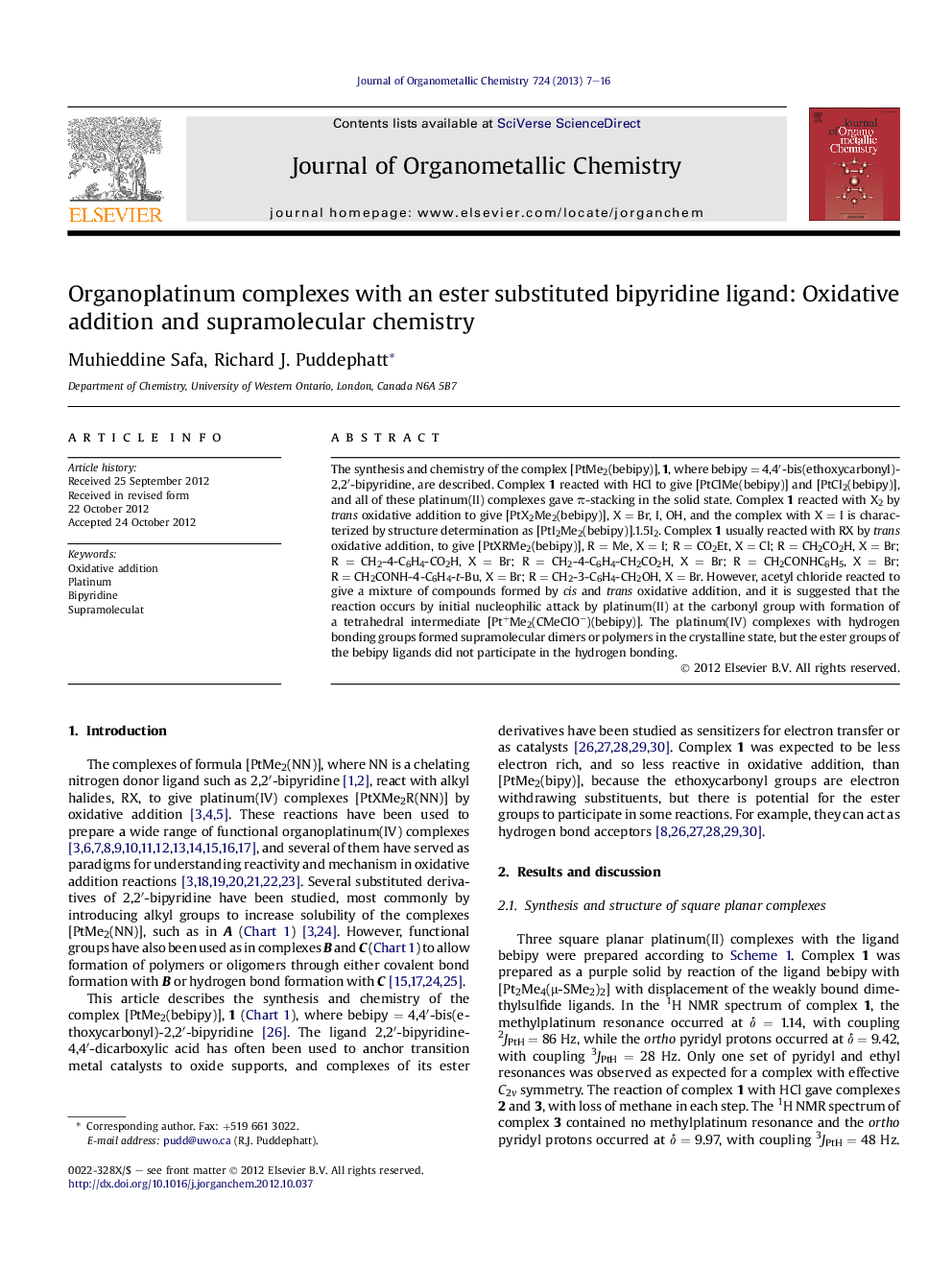| Article ID | Journal | Published Year | Pages | File Type |
|---|---|---|---|---|
| 1321946 | Journal of Organometallic Chemistry | 2013 | 10 Pages |
The synthesis and chemistry of the complex [PtMe2(bebipy)], 1, where bebipy = 4,4′-bis(ethoxycarbonyl)-2,2′-bipyridine, are described. Complex 1 reacted with HCl to give [PtClMe(bebipy)] and [PtCl2(bebipy)], and all of these platinum(II) complexes gave π-stacking in the solid state. Complex 1 reacted with X2 by trans oxidative addition to give [PtX2Me2(bebipy)], X = Br, I, OH, and the complex with X = I is characterized by structure determination as [PtI2Me2(bebipy)].1.5I2. Complex 1 usually reacted with RX by trans oxidative addition, to give [PtXRMe2(bebipy)], R = Me, X = I; R = CO2Et, X = Cl; R = CH2CO2H, X = Br; R = CH2-4-C6H4-CO2H, X = Br; R = CH2-4-C6H4-CH2CO2H, X = Br; R = CH2CONHC6H5, X = Br; R = CH2CONH-4-C6H4-t-Bu, X = Br; R = CH2-3-C6H4-CH2OH, X = Br. However, acetyl chloride reacted to give a mixture of compounds formed by cis and trans oxidative addition, and it is suggested that the reaction occurs by initial nucleophilic attack by platinum(II) at the carbonyl group with formation of a tetrahedral intermediate [Pt+Me2(CMeClO−)(bebipy)]. The platinum(IV) complexes with hydrogen bonding groups formed supramolecular dimers or polymers in the crystalline state, but the ester groups of the bebipy ligands did not participate in the hydrogen bonding.
Graphical abstractThe oxidative addition chemistry of a dimethylplatinum complex with ester functionalized bipyridine ligand is investigated.Figure optionsDownload full-size imageDownload as PowerPoint slideHighlights► Complex [PtMe2(bebipy)] gives π-stacking in the solid state. ► It reacts with X2 by trans oxidative addition to give [PtX2Me2(bebipy)]. ► Acetyl chloride probably reacts via tetrahedral intermediate. ► Hydrogen bonded groups give dimers or a polymer.
